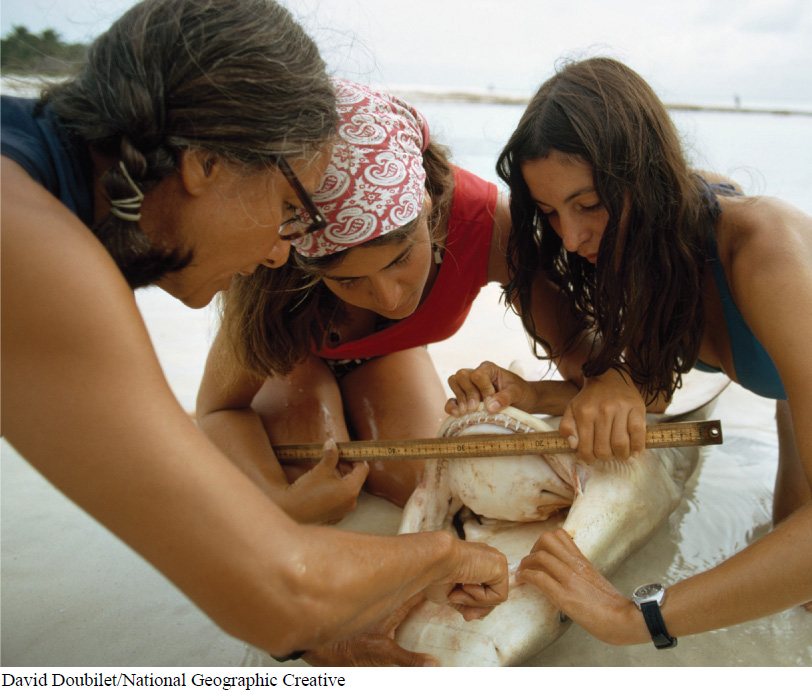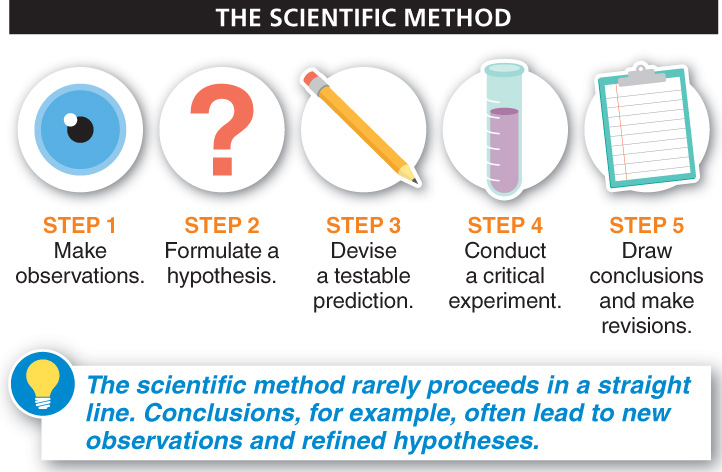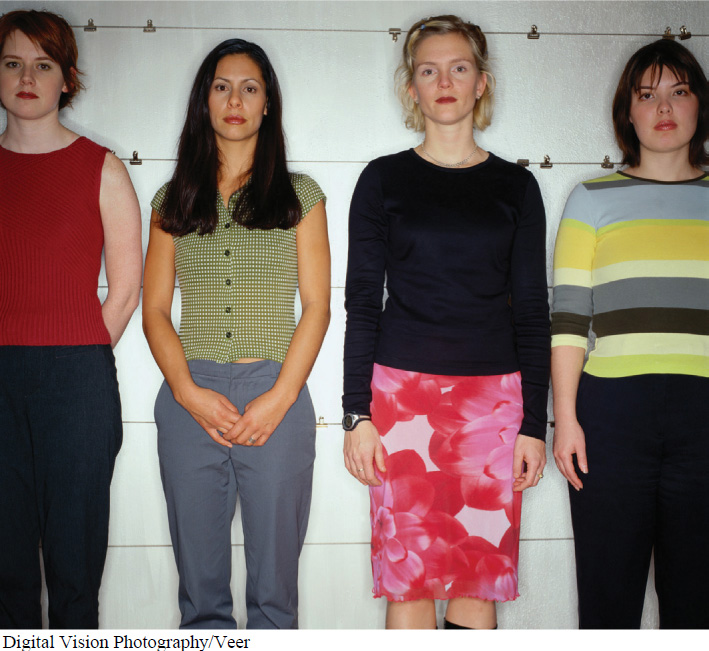
“Scientific method”—this term sounds like a rigid process to follow, much like following a recipe. In practice, however, the scientific method is an adaptable process that can be done effectively in numerous ways. This flexibility makes the scientific method a powerful process that can be used to explore a wide variety of thoughts, events, or phenomena, not only in science but in other areas as well.
The basic steps in the scientific method are:
- Step 1. Make observations.
- Step 2. Formulate a hypothesis.
- Step 3. Devise a testable prediction.
- Step 4. Conduct a critical experiment.
- Step 5. Draw conclusions and make revisions.
Once begun, though, the process doesn’t necessarily continue linearly through the five steps until it is concluded (FIGURE 1-5). Sometimes, observations made in the first step can lead to more than one hypothesis and several testable predictions and experiments. And the conclusions drawn from experiments often suggest new observations, refinements to hypotheses, and, ultimately, increasingly precise conclusions.

What should you do when something you believe in turns out to be wrong?
An especially important feature of the scientific method is that its steps are self-
“If science proves some belief of Buddhism wrong, then Buddhism will have to change.”
— THE 14TH DALAI LAMA, New York Times, December 2005

8
Because the scientific method is a general strategy for learning, it needn’t be used solely to learn about nature or scientific things. In fact, we can analyze an important criminal justice question using the scientific method:
- How reliable is eyewitness testimony in criminal courts?
For more than 200 years, courts in the United States have viewed eyewitness testimony as unassailable. Few things are seen as more convincing to a jury than an individual testifying that she can identify the person she saw commit a crime (FIGURE 1-7). But is eyewitness identification always right? Can the scientific method tell us whether this perception—
- Does echinacea reduce the intensity or duration of the common cold?
- Does shaving hair from your face, legs, or anywhere else cause it to grow back coarser or darker?

TAKE-HOME MESSAGE 1.4
The scientific method (observation, hypothesis, prediction, test, and conclusion) is a flexible, adaptable, and efficient pathway to understanding the world, because it tells us when we must change our beliefs.
What are the five basic steps of the scientific method?
(1) Make observations. (2) Formulate a hypothesis. (3) Devise a testable prediction. (4) Conduct a critical experiment. (5) Draw conclusions, and make revisions.